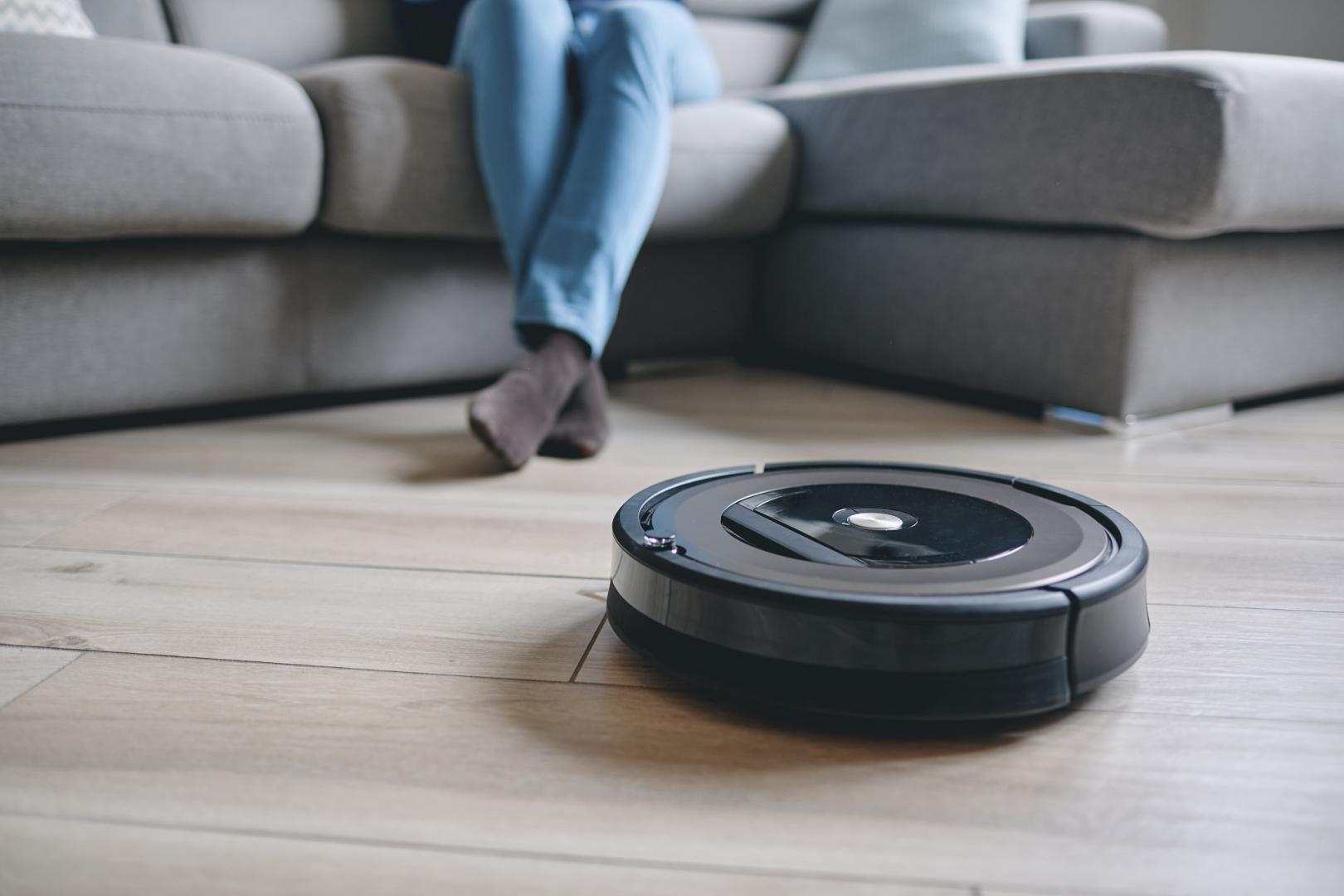How to clean a robot vacuum: top tips for keeping your robovac in working order
Ensure your robot vacuum keeps your floors spotless

Gone are the days of dragging a hefty vacuum cleaner around the house every time your floors need a quick once over. Now there’s an array of lightweight compact floor cleaners that are easier to maneuver and collect every scrap of dirt and debris from your floors.
If you don’t have time to guide one of these around your home, or you simply detest vacuuming, one of the best robot vacuums lets you outsource the choor completely, giving you time to put your feet up and enjoy a well-earned rest. So it’s no surprise that the number of US households with a robot vacuum grew by 11% to 14.2 million in 2018, according to market research firm Statista.
While one of the best vacuums is essential when it comes to a thorough, more vigorous job, this nifty home appliance is certainly an essential part of the cleaning arsenal to keep daily spills at bay.
Capable of getting into the nooks and crannies on one charge, some robot vacuums are even able to map the layout of your home, storing this data in its settings for a more efficient clean next time, while more advanced models can also mop the floors!
While you can leave your robot vacuum to pootle around your floors unaided, it is important to regularly clean the robot vac in the same way you would any other vacuum cleaner. This will ensure it continues to clean your floors as efficiently as possible.
Read on to find out just how to clean your robot vacuum, or if you want to get your hands on one of the best robot vacuums right now, check out these great deals for some of the best prices on the market.
How to clean a robot vacuum
Start by emptying the dust canister - ideally, you should be doing this after every use, although it’s easy to forget. If the dust canister is plastic, and you have the time, rinse it out and leave it to air dry before slotting it back into the robot vacuum. However, it’s important to make sure it has dried fully, otherwise during the next clean, the dust and debris collected will stick to the canister.
Sign up for breaking news, reviews, opinion, top tech deals, and more.
Some robot vacuums, such as the iRobot Roomba i7+ and the iRobot S9+, are self-emptying and deposit the debris from each clean into a bag in the charging station. With these robovacs, there’s no need to empty the dust canister yourself, but make sure you check the bag in the charging station and replace it if it’s full.
Next, turn your attention to the brush. Your robot vac spends a lot of time picking up dirt, including strands of hair, string and countless other items, all of which can get tangled around the brush, restricting the suction power and making it twice as hard for your helper to get the job done.
Some robot vacuums have removable brushes, which make it easier to untangle any debris that’s got caught. Consult the robot vacuum’s manual if you’re unsure whether your model offers this feature.
Use your fingers to pick out any unwanted remnants, or for heaving tangled stands, consider using a pair of tweezers, or any dedicated tools, such as a comb or blade, that came bundled with the robot vacuum. If this doesn’t work, you may need to resort to cutting through the strands with a pair of scissors.
Don’t forget any edge brushes your robot vacuum has, although these are considerably more delicate than the main brush, so do take care if using scissors or blades.
Finally, make sure you clean the robovac’s filters, once a week if possible but at least after ten sessions, to ensure they don’t clog up. To remove built up dust carefully tap the filter over a bin, and use a soft brush to dislodge any dirt that doesn’t fall away freely. Alternatively, if you have a handheld vacuum cleaner, you can use this to collect the dust and debris from the filter.

Don’t forget the wheels and sensors
The dust canister and brushes aren’t the only part of the robot vac that can get bunged up. All sorts of troublesome dirt lurks around the house and some of that can get caught in the wheels causing the robot vacuum to struggle to maneuver around your home. If you notice your vac is moving a little sluggish, check the wheels and use a cloth to remove any debris on them.
Imagine trying to clean the house wearing smeared glasses. You almost certainly will miss a few patches here and there. It’s the same for your robot vac. They may not have eyes but they depend on sensors to find their way around your home. Gently use a dry cloth to wipe away any excess build up on the sensors, while for stubborn dirt, use a damp cloth. It’s also important to make sure the charging pins are wiped clean with a dry cloth. Neglecting to do so means your vac may struggle to fuel up before a clean, leading it to abandon a clean half way through.
- Not sure a robo vac is for you? discover How robot vacuums work and whether you should buy one?
- Grab this Ecovacs robot vacuum for its (almost) lowest price ever
- Black Friday vacuum deals 2021: what to expect
Finishing touches
Finally, give the exterior of your robot vacuum a wipe with a dry cloth to remove any smudges on its exterior casing. If there are any stubborn marks, use a damp cloth to wipe these away. It’s also worth checking the charging station and power cord for dirt too, and again use a dry cloth, only resorting to a damp version for stubborn stains, and always ensure the charging station is unplugged if you’re going to do this.
If your robot vac can mop as well as vacuum, taking care of its water tank and mopping cloths is essential, too. Once your vac has finished a mop session empty any residual water from the tank and give it a clean. If the robot vacuum uses disposable cloths, remove the dirty one and replace it with clean, new cloth. Alternatively, if you have a reusable mopping pad, remove it from the robot vacuum and put it on a cycle in your washing machine, following the care instructions in the manual or on the label.
These tips are just a general guide, so always refer to the users’ manual for thorough instruction on how to care for your robot vacuum.
How often should I clean a robot vacuum?
To keep your robot vacuum running at optimum performance we suggest following a cleaning schedule. Empty the dust canister after every use, while filters should be cleaned once a week (twice if you have pets).
When it comes to sensors; those that detect when the dust canister is full be cleaned fortnightly while those used to track the robot’s location and ensure it doesn’t plunge down a flight of stairs, should be wiped over once a month, along with giving the main brush and side brushes a clean.
- Check out these great robot vacuum deals

Janet is a freelance journalist of nine years who specializes in film, food, and small appliances. She is passionate about connecting people with great products and services and has written for some of the biggest home and film publications around. She is also a published author and her debut novel Gothic Angel is available through Waterstones, Amazon, and other good bookshops.